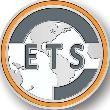
Q1:
Q2:
In an ever-evolving world, security in transportation is paramount. Whether it's transporting valuable assets, confidential documents, or sensitive materials, ensuring their safety during transit is nonnegotiable. This guide delves into the intricacies of securing transport and provides actionable insights to safeguard your goods effectively.
Understanding Security Transport
Security transport encompasses a range of measures aimed at protecting goods from theft, damage, or unauthorized access during transit. From armored vehicles to advanced tracking systems, various strategies are employed to mitigate risks and ensure safe delivery.
Key Components of Secure Transport

Risk Assessment
Before embarking on any transportation endeavor, it's crucial to conduct a thorough risk assessment. This involves scrutinizing various aspects such as the chosen route, the mode of transport, and the nature of the goods being transported. By doing so, potential vulnerabilities can be identified, allowing for the determination of the level of security needed to mitigate these risks effectively.


Secure Packaging
Ensuring the safety and integrity of goods during transportation begins with proper packaging. It's imperative to use robust and durable materials that can withstand handling and external forces. Additionally, incorporating extra security features like tamper-evident seals and GPS tracking devices embedded within packages adds layers of protection against tampering and theft.
Trained Personnel
The success of any security protocol heavily relies on the competency of the personnel involved. From drivers to logistics managers, everyone should undergo comprehensive training to understand security procedures thoroughly. This ensures that they can effectively implement these protocols and respond appropriately in case of emergencies.
Vehicle Security
Armored vehicles equipped with advanced security features play a pivotal role in safeguarding transported goods. Technologies such as GPS tracking, live video monitoring, and remote immobilization
Contact - 1-877-455-2935

systems enhance the security of vehicles. Regular maintenance and inspections are essential to ensure the reliability and functionality of these security measures.
Route Planning
Optimal route planning is essential for minimizing risks and optimizing efficiency during transportation. Factors such as traffic patterns, crime rates, and road conditions should be carefully considered when determining the safest and most secure routes. By doing so, potential security threats can be mitigated, ensuring smooth and secure transportation operations.


Communication Systems
Effective communication is paramount in ensuring the coordination and security of transportation processes. Establishing constant communication channels between drivers, dispatchers, and security personnel facilitates real-time monitoring and response to any security incidents. Utilizing encrypted communication channels and real-time tracking systems further enhances security measures.
Emergency Preparedness
Despite meticulous planning, unforeseen circumstances can still arise during transportation operations. Therefore, developing comprehensive emergency response plans is crucial to mitigate potential risks effectively. Regular drills and training exercises should be conducted to ensure that all personnel are wellprepared to handle emergencies promptly and efficiently.

